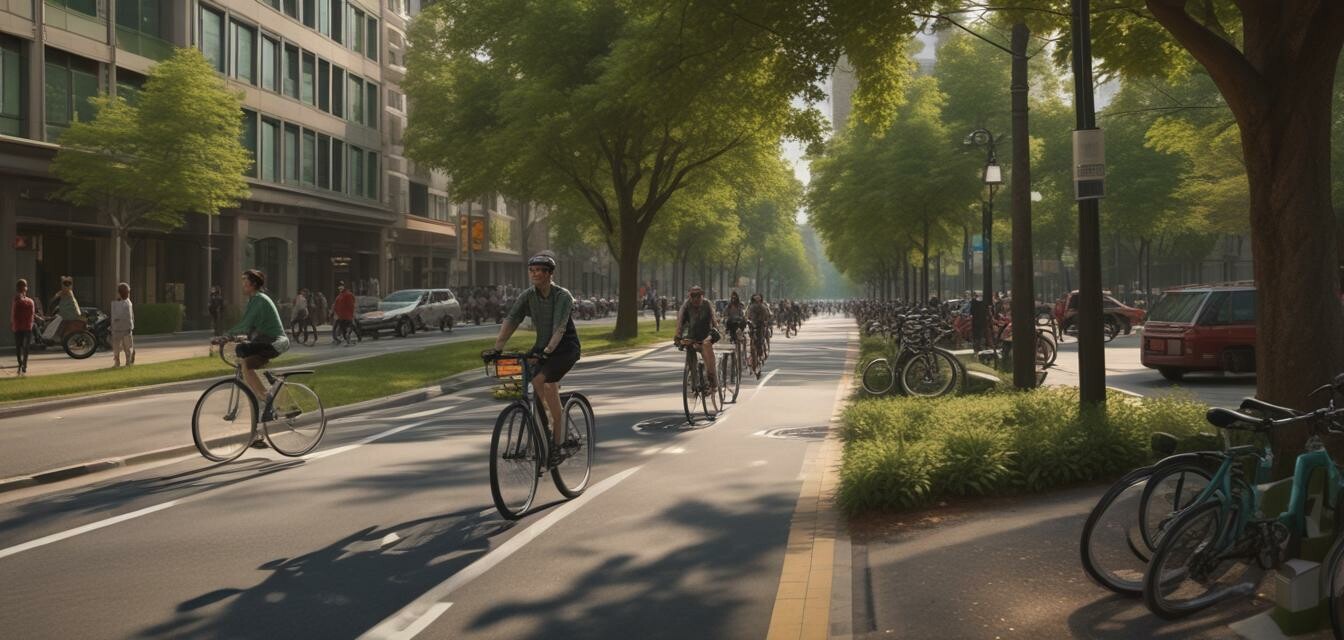
Urban Cycling Infrastructure: The Role of Electric Bikes
Key Takeaways
- Electric bikes offer an eco-friendly alternative for urban commuting, enhancing mobility.
- Integration of electric bikes into city cycling infrastructure can reduce congestion and improve travel times.
- Investment in charging stations and dedicated bike lanes is critical for future developments.
- Understanding local regulations can maximize the benefits of electric biking.
- Community engagement is essential to foster support for improved cycling infrastructure.
Electric bikes, or e-bikes, are revolutionizing urban cycling by providing an efficient, eco-friendly means of transportation. As urban populations continue to swell, understanding how these bikes fit into existing cycling infrastructure is crucial. This article will examine the role of electric bikes in urban settings and the necessary advancements needed in cycling infrastructure to support growth and sustainability.
The growing popularity of electric bikes
Over the past few years, electric bikes have gained traction among commuters. Their rise in popularity can be attributed to several factors, including:
- Lesser physical exertion compared to traditional bicycles, making them suitable for a wider audience.
- Environmental benefits, helping to reduce carbon footprints in urban areas.
- Cost-effective commuting alternative when compared to car ownership and maintenance.
Current state of urban cycling infrastructure
Urban areas vary significantly in terms of supportive cycling infrastructure. The current state can be summarized in the table below:
| City | Bike Lanes | Charging Stations | Regulatory Support |
|---|---|---|---|
| City A | Extensive | Limited | Strong |
| City B | Moderate | Growing | Moderate |
| City C | Minimal | Absent | Weak |
The above table shows how different cities are handling the integration of electric bikes within their cycling infrastructure. Notably, cities that have made substantial investments in bike lanes and charging stations tend to have a stronger regulatory framework supporting biking in general.
Challenges in current infrastructure
Despite their benefits, several challenges hinder the efficient use of electric bikes in urban areas:
- Lack of dedicated bike lanes: Many cities still lack proper infrastructure to support e-bikes, leading to safety concerns.
- Inadequate charging stations: Without sufficient charging facilities, the practicality of electric bikes is limited.
- Regulatory hurdles: Different cities have varying regulations that can affect how e-bikes are used on the road.
The future of urban cycling and electric bikes
Investment in appropriate infrastructure is crucial. As urban cycling continues to evolve, several developments are on the horizon:
- Expansion of dedicated bike lanes: Many urban planners are prioritizing the creation of safe cycling routes.
- More charging stations: Cities are recognizing the need for accessible charging points to encourage e-bike use.
- Enhanced community education programs: Workshops and information campaigns can help educate the public about the benefits of e-bikes.
Potential impact on commuting and urban living
Integrating electric bikes into urban planning can significantly affect commuting patterns. Some anticipated benefits include:
| Benefit | Traditional Commuting | Electric Bikes |
|---|---|---|
| Travel time | Longer | Shorter |
| Carbon footprint | Higher | Lower |
| Physical exertion | Higher | Lower |
| Cost | Higher | Lower |
Conclusion
The role of electric bikes in urban cycling infrastructure is set to expand as cities adapt and grow. Understanding the integration of these bikes into existing frameworks is essential for creating a sustainable urban environment. By investing in infrastructure, encouraging regulatory support, and fostering community engagement, cities can enhance the e-biking experience, ultimately leading to a healthier planet.
Tips for cyclists
- Stay informed about local regulations regarding e-bike use.
- Utilize local resources to find charging stations in your area.
- Participate in local community forums to voice support for better cycling infrastructure.
Pros
- Reduces reliance on cars, thus decreasing traffic congestion.
- Encourages healthier lifestyles through cycling.
- Supports environmental sustainability efforts.
Cons
- Initial costs can be high for purchasing electric bikes.
- May require adaptation by both cyclists and drivers alike.
To explore more about cycling safety and maintenance, visit our Tips & Advice section. For updates on the latest trends in electric biking, check our News & Trends blog. For those looking to secure their electric bikes, consider reading about Bike Locks & Security.